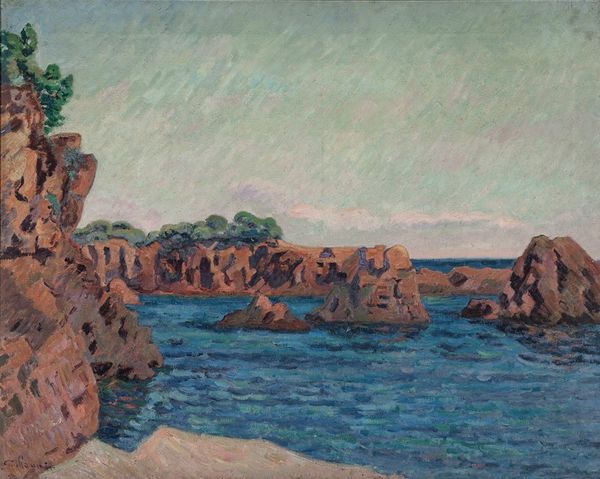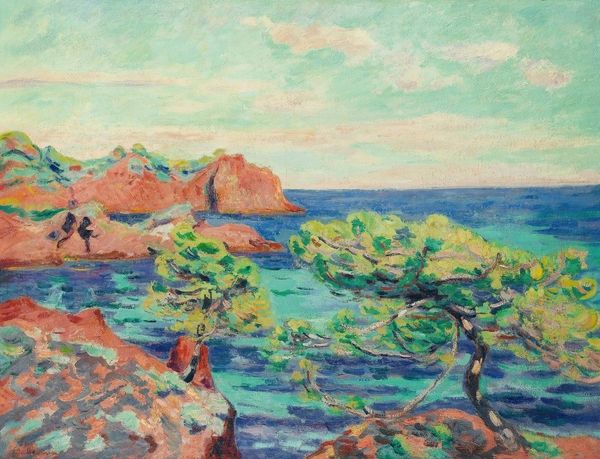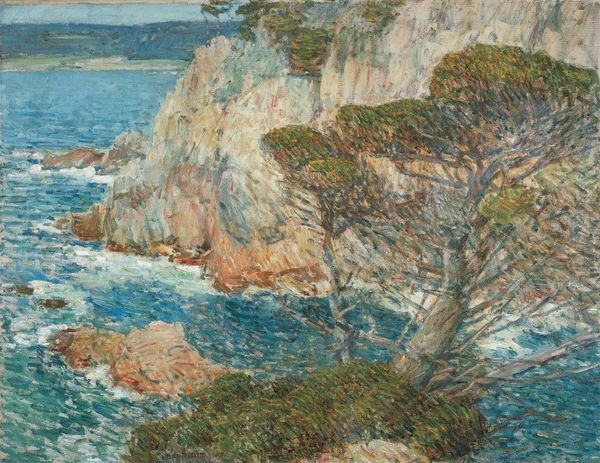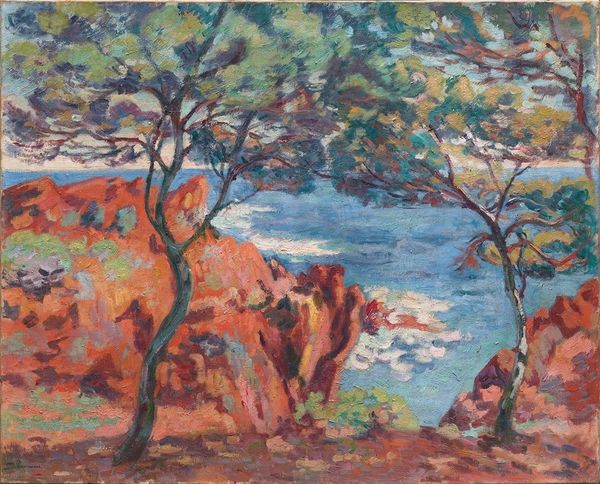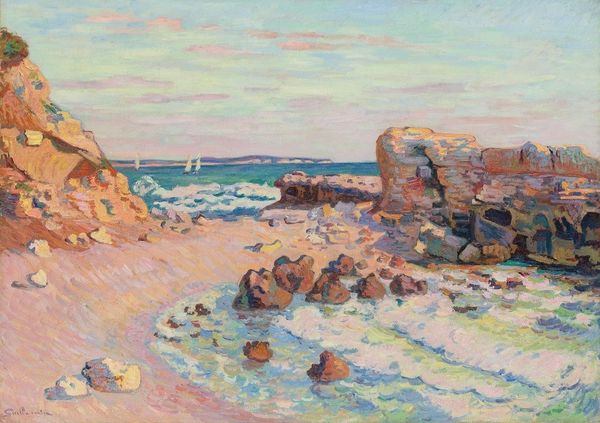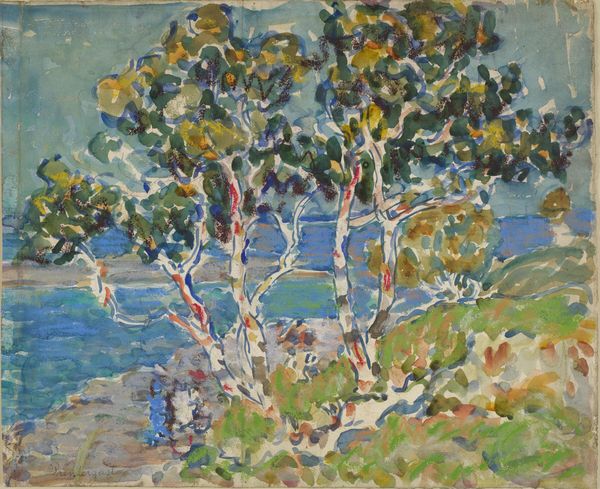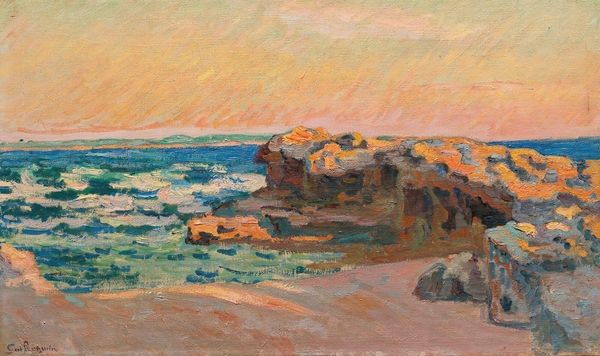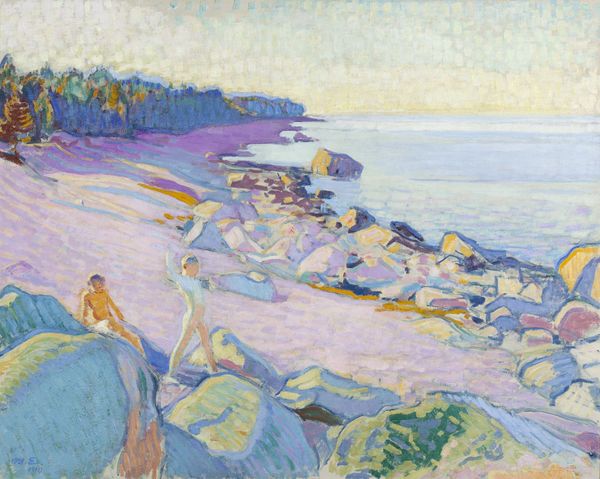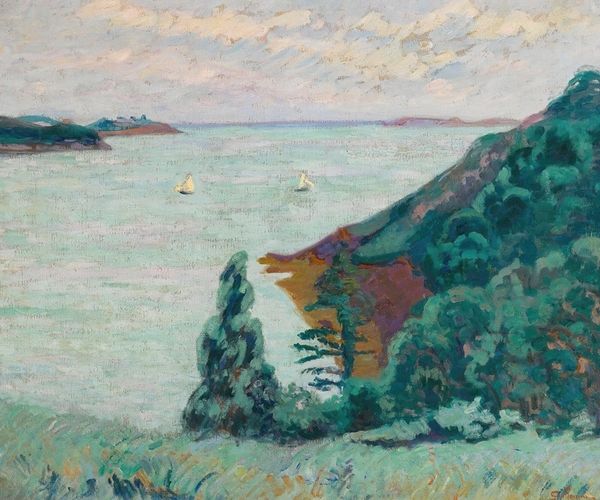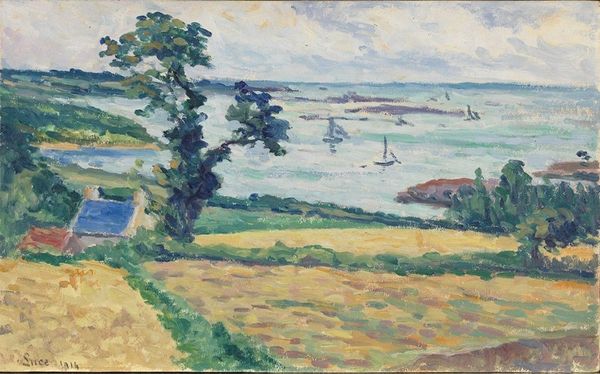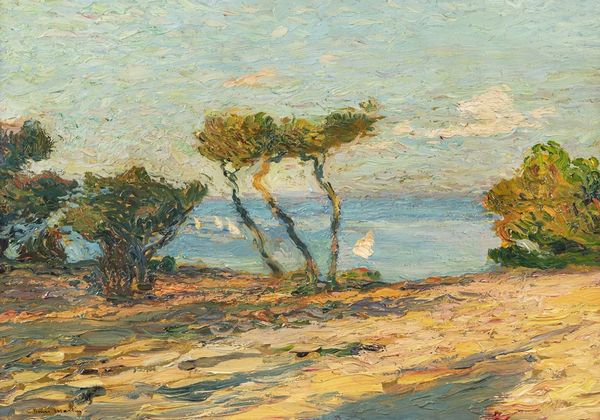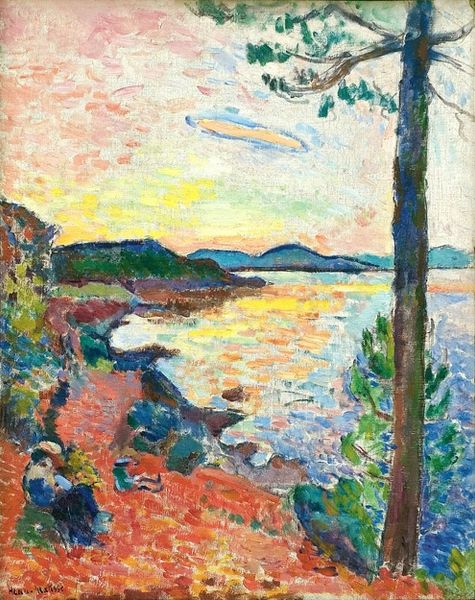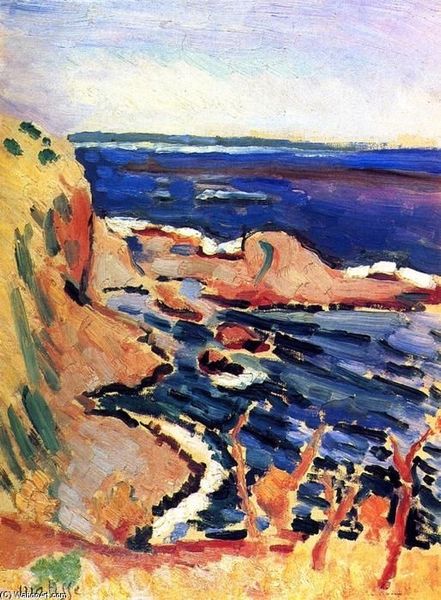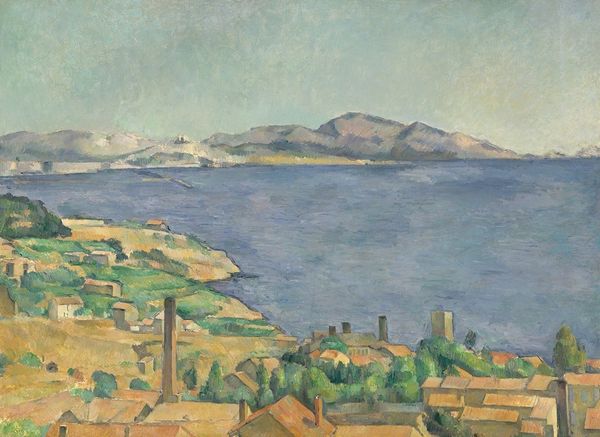
Copyright: Public Domain: Artvee
Curator: Before us is Armand Guillaumin's "Bord De Mer à Agay," likely created around 1900. An oil painting capturing a vibrant seascape. Editor: It immediately strikes me as intensely textural. The thick impasto, especially in the rendering of the rocks and foliage, creates a tactile quality. Curator: Guillaumin was, of course, a key figure in Impressionism, and a close friend of both Pissarro and Cézanne. He often sought to portray working-class leisure in the Parisian suburbs. In this period of his career, later in life, the artist sought the landscapes of the French Mediterranean. Editor: Absolutely. The dabs and strokes of color—the oranges, the greens, the blues—are clearly in the tradition, even pointillist, of rendering reflected light. What fascinates is the deliberate asymmetry; the solid landmass dominates. What are you drawing from its location and subject? Curator: Well, around 1900, many artists flocked to the Côte d'Azur to escape the urban spaces associated with industrial labor. These vibrant colors represent both an idealized vision of labor-free existence and a literal escape from societal and environmental restrictions. Editor: So you see this work as more than a visual exercise but rather, in part, as an almost utopian dreamscape, rejecting labor, reflecting new freedoms? Curator: In part. One should keep in mind that representations of the natural world in Impressionism is almost always embedded within shifting industrial contexts and socio-political reformations. I view those themes, the move for freedoms, through an intersectional lens. Editor: A valid and important point. As to the artist's handling of the painting’s surface, each application reveals his interest in the optical interplay between color and form. His careful brushstrokes show, for example, an undeniable desire to capture light and motion on water— Curator: Precisely—making paintings like "Bord De Mer à Agay" not simply pretty, but politically charged—reflecting the search for spaces free from constraint. Editor: Well, on that note, this painting’s construction—the application, the paint quality—continues to offer new insights upon repeated, deep, engagements with the piece. Curator: And to me, it embodies how artwork responds to shifts in work culture. Examining them helps understand changes still relevant today.
Comments
No comments
Be the first to comment and join the conversation on the ultimate creative platform.
